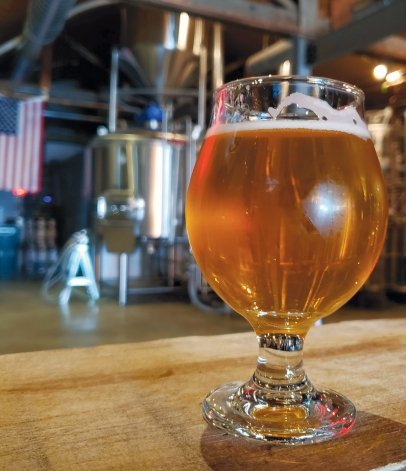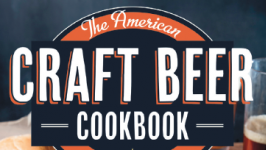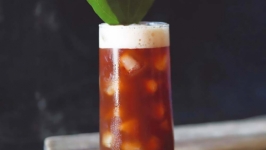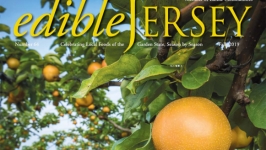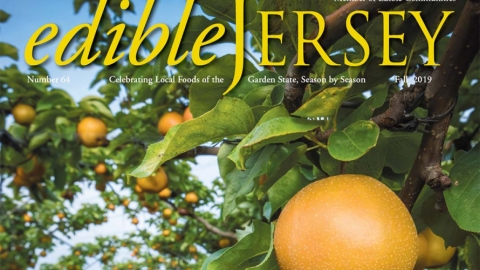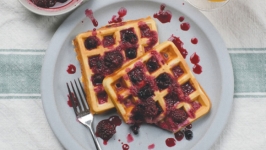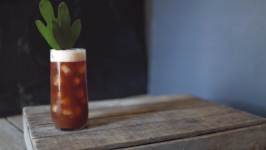DEMYSTIFYING THE CRAFT BREW EXPERIENCE
Have you heard about the new brewery in your area? More than 100 breweries now operate in NJ, and even more are on the way. It’s a good bet that you now have a hyper-local option when it comes to drinking a fresh pint.
With all these new breweries come a near-endless buffet of beer styles. This is a far cry from the industrial light lager and imports that ruled the American beer aisles for decades following Prohibition, or the flashy new flavors and brands that quickly became commonplace over the past 30 years of the craft beer renaissance.
Yet, many who walk into a local brewery for the first time are intimidated. The beer styles may not be familiar—saison, sour ale, barleywine. The words used to describe those styles may not make sense—juicy, hazy, viscous.
Fear not. Beer, though it requires great skill to make well, is a welcoming beverage. Most brewers want everyone to feel like part of the family. Breweries try to eschew the snobbery that can exist with other beverages, and that open-door feeling shows.
An easy way to approach beer is to think of it as food. In my view, beer pairs better with food than wine does. That’s a bold and often controversial statement, but it’s absolutely true. Thanks to the core ingredients in beer and the inventiveness of America’s brewers, there are endless flavor combinations that complement and enhance everything from food-truck tacos to the seven-course meal at the best white-linen tablecloth restaurant in the state.
Beer is a polarizing beverage, however. After Prohibition, beer emerged as the lesser of the three main alcoholic options. While wine and spirits producers spent time on marketing, innovation and cultivating a following, beer slid into the background, relegated to frat parties and tailgates. Advertising campaigns featuring talking frogs and bikinis didn’t help.
With all the choices available, there’s at least one beer on the market today that will suit your style. A simple way to approach it is to zero in on what you enjoy eating, and then locate it in liquid form. One way to start that journey is to think about the individual components of a beer.
The four main ingredients in beer are water, malt, hops and yeast. Layered on top of those are often flavoring ingredients that creative brewers add to recipes. First though, let’s look at the core four components of beer, and how each brings important (and familiar) food flavors to your pint.
Let’s start with water, which can be soft or hard with varying degrees of salinity. There’s also certainly a difference between treated city water and water drawn from a cool country well. It can also be neutral, like water from a bottle.
Then there’s malt or, more accurately, grains, which are typically roasted before being added to beer. At the start, malt can have a slight toasted aspect, like Cheerios, before getting darker and taking on flavors of Grape Nuts, actual toast, caramel, chocolate, coffee, toffee and even burnt toast or ash. And if that sounds weird, think about that pie you order at your favorite brick oven pizzeria that comes out fresh from the oven with bubbly crust tinged black at the edges. Those charred pieces are often what people reach for, even though the flavor isn’t as appealing as, say, mozzarella or garlic. Wheat adds fullness to a beer, and rye brings a spicy character to a recipe.
Hops are the problematic ingredient. They are part of the cannabis family, but you can’t do with hops what you do with marijuana. Seriously, don’t try. Hops are good for one thing only: making beer. And here’s where the trouble comes in. Despite being used for countless generations to bring aroma and flavor to beer, hops have long been associated with a single characteristic: bitterness. That’s not necessarily the case anymore.
When you visit a brewery, you’ll likely encounter the letters DDH, which stand for “double dry hopping.” This means that brewers are adding aromatic hops at the end of the brewing process, not necessarily during the boil (where the vegetation would impart that assertive bitterness), and the results are why many of the India pale ales (IPAs) made today are aromatic and flavorful without the harsh bitterness of days past. Hops these days can smell or taste like citrus fruits, strawberries, pine and more. Two of the most popular hop varieties today are Citra and Mosaic, which impart flavors of orange and lime, pineapple, mango and passion fruit.
Additionally, brewers these days are taking the old, familiar IPA to new places. There are milkshake IPAs brewed with peanut butter and chocolate, and other IPAs are brewed with lactose-dosed fruit purees to give the beers a creamy, dessert feel. The hops you may recall with bitterness have been improved upon, experimented with, and that experimentation means more options.
With so many choices these days, it can be tough to drill past the clever names, the hybrid styles, special ingredients, and artistic labels to get down to what really matters: Do you like the beer in your hand?
Finally, yeast. Depending on the strain, yeast can bring flavors and aromas of honey, flowers, bubble gum, banana, clove, spice, leather, tobacco and more. Yeast is the most important ingredient, since it is the microbe that converts the sugar in beer to alcohol, and it’s also all around us. So while many brewers will get their samples from a lab, others pluck them out of the air and allow that yeast to inoculate their beers. To see this in action, and taste the excellent results, go to Pennington and visit the Referend Bier Blendery.
Beyond the main four ingredients, there’s the endless list of actual food items that brewers have added to beer. Commonly added are herbs and spices, from mint to pink peppercorn. Then things get a little wacky. Some brewers add Skittles, marshmallows, Swedish fish—even white truffle (Carton Brewing in Atlantic Highlands releases one every year, harvest-dependent).
And if you want something truly off the beaten path, there are beers with yeast harvested from the belly of wasps or brewed with grilled beef hearts.
Some brewers then take their beers and age them in bourbon or wine barrels for extra flavor. There is really nothing that’s off limits or that brewers won’t try. And these days, we are the lucky witnesses of the most creative and inventive period in beer making history since before Prohibition, when beer was also considered a local product.
So that brings us back to your local brewery. When you walk in for the first time, New Jersey law mandates that you take a tour. This can include a full walk though of the facility, where a guide will show you the equipment, show off raw ingredients, and hopefully give you a backstory of the establishment.
While you’re likely eager for a drink, the tour is a great way to ease into a brewery experience. It can take off some of the pressure that comes with ordering a beer right away. Then, when it’s your turn to order and you’re faced with a multitude of choices, tell the bartender what flavors you like: coffee, tea, orange juice, whatever. The bartender can steer you toward a beer.
Also, there’s no need to immediately commit to a pint. Most breweries will offer you a taste—usually an ounce or less—so you can give it a whirl. You can also order a flight of beers, picking a few different ones, usually in 4-ounce pours, to get the brewery’s full range of flavors.
Right now, the craft beer industry accounts for just a scooch more than 13 percent of the entire beer market. As a result, smaller brewers have really ramped up their offerings to accommodate drinkers of Bud Light, Coors Lite, and Miller Lite—the top three bestselling beers in the country.
Breweries try to eschew the snobbery that can exist with other beverages, and that open-door feeling shows.
In just about any craft brewery, you can expect to see lagers and pilsners or traditional blonde ales that are crisp, refreshing, not overly hoppy. These are the kinds of beers you’ll want to reward yourself with after mowing the lawn or working outside.
In some cases, brewers are working with local maltsters, like Rabbit Hill in Shiloh, to add local flavor to recipes. In the Garden State, it’s not uncommon to find breweries that are working with local farmers, apiaries, and more to bring a taste of the state to their brew kettle.
While our state law prohibits production breweries from serving food (many places will let you bring in food or order from local restaurants), you can always get beer to go. Most brewers in the state are also canning their beer. Cans are a great package; they keep out light and oxygen, two things that can damage flavor. And draft-only beer has gotten an upgrade as well. After decades of using glass half-gallon jugs called growlers, brewers have largely switched to crowlers: quart-size aluminum cans that are easy to transport, open and recycle.
Beer doesn’t need to be intimidating. The people who make and serve it are eager to welcome new customers with open arms and full glasses. All they need is for you to take the first step through their doors with an open mind.
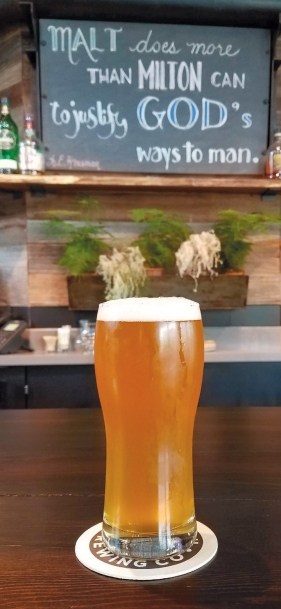 WHAT MAKES A GOOD BEER?
WHAT MAKES A GOOD BEER?
A T-shirt pops up often at beer festivals with this message: “Drink Craft, not Crap.” The idea being that “craft beer,” made by small independent producers, is better than, say, the liquid produced by large multinational brewing companies. The problem with this sentiment is that not all craft beer is good and not all industrial beer is bad.
With so many choices these days, it can be tough to drill past the clever names, the hybrid styles, special ingredients, and artistic labels to get down to what really matters: Do you like the beer in your hand?
On the podcast Steal This Beer, which I co-host with Augie Carton of Carton Brewing in Atlantic Highlands, we often use the phrase, “Don’t yuck someone else’s yum.” If you like a beer and someone else doesn’t, that's fine. You can both enjoy what you like and what appeals to your palate. Knowing your personal preferences goes a long way toward enjoying a beer
Still, a few things are important to keep in mind when it comes to evaluating the beer in front of you. Styles no longer seem to exist. “India pale ale” now encompasses a spectrum of beers, which has strayed widely from the early British versions of the style. We can assume that IPA just means hoppy. There are white stouts, black Kölsch, fruited lagers, and more on offer. Ask your brewer or bartender about tasting notes to see if any fit your preference.
Other flavors are considered flaws. If you taste artificial butter (the kind you find on movie theater popcorn), that’s diacetyl. This taste shouldn’t be noticeable—unless a brewer is making a beer as an homage to the cinema snack. Green apple flavor is a sign of acetaldehyde. If you’ve had a Heineken and smelled skunk, you’ve experienced ’a beer that’s been “light struck,” which happens when sunlight negatively affects the alpha acids in hops.
The taste of wet cardboard can be a sign of oxidation in a beer and smelling the plastic scent commonly associated with a Band-Aid could mean an infection in the beer. Some of those aromas can be pleasant in the right situation (no judgment if it's skunk for you). But in a beer, these aromas are usually a sign that you can find a better pint someplace else.
Another way to assess quality is glassware. If you show up at a brewery and there is carbonation sticking to the inside walls of the beer glass, it means it’s not fully clean. The result could be a layer of old soap, or food, or fats from foods that stuck on while in the washer. If you come across this at a brewery—if they are serving you their beer in a dirty glass—it’s likely a sign of deeper issues to come.
The best way to find a good beer is to experiment. Try different kinds, visit different breweries, and let each brew speak to you in a positive way. Drink what you like and don’t let anyone tell you different.
BEER TERMS
Ale – A beer brewed with Saccharomyces cerevisiae, a top-fermenting yeast. Often more fruity and earthy than lagers.
Barleywine – A robust ale that is usually high in alcohol content and can have flavors of toffee, plum, fig, cocoa, and more. Drink with caution or risk a tough hangover.
Cold-Filtered – A marketing term used by a large
multinational brewery. Most beer is cold filtered, meaning it is put through a filter after it is fermented and before it is packaged.
Hazy – A word used to describe the current IPA trends. Many of the New England—style beers are unfiltered and have hops or yeast particles in them, meaning they appear hazy when poured into a glass.
IPA – The India pale ale continues to evolve as a beer style. There are so many different kinds of IPA on the market these days and is the best-selling craft category. If you see those three letters together it’s best to assume that the beer is going to be hoppy.
Juicy – Also a word used to describe the newer generation India pale ales. It usually means a beer is packed with pounds of hops that impart flavors of juice like orange, pineapple, mango, and more.
Lager – A beer brewed with Saccharomyces pastorianus, a bottom-fermenting yeast that often leaves beers crisp and refreshing.
Pilsner – A type of lager that is generally crisp, refreshing, and easy drinking.
Saison – Also called a farmhouse ale. It’s traditionally a Belgian style that is brewed with wheat and sometimes lightly spiced.
Sour Ale – A catch-all term for a beer that has a puckering or sour quality. This can come from lactic or citric acids. Sometimes these beers are called wild, or spontaneous.
Stout – Generally a dark beer that mimics flavors of coffee or chocolate. It’s sometimes served on nitro (think Guinness) giving it a creamy mouthfeel.
Viscous – thick and tongue coating. You’ll find some stouts that are heavy on sugar and alcohol that come across as thick as oil, giving a robust impression on the palate.


